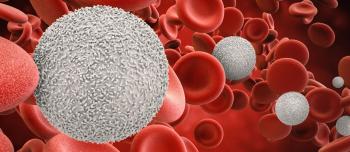Researchers from the United Kingdom (UK) and the U.S. have made a breakthrough in hemophilia gene therapy. In a study published last month, the team reported successfully treating six patients with severe hemophilia B. The lead author of the study was Amit C. Nathwani, MB, ChB, PhD, Department of Hematology, University College London (UCL) Cancer Institute, London.
The UCL investigators used adeno-associated viruses (AAVs) as delivery vehicles, or vectors, to carry the genetic codes that trigger the production of the factor IX (FIX) protein, which is deficient in hemophilia B patients. Ideally, AAVs deliver the genetic material into living cells to sustain therapeutic effect without causing disease or triggering significant immune responses.
Nathwani and his team reported that a single injection of the gene therapy into an arm vein activated the production of small amounts of FIX--enough to allow four patients to stop using FIX concentrates. The other two patients needed fewer factor concentrate infusions. Their factor levels went from less than 1% before the trial to a range of 2%-12%, which is significant. The patients have continued to produce their own FIX for up to 22 months. The liver enzymes of two patients were elevated, but were successfully treated with steroids.
Despite moderate successes, the field of gene therapy has faced some major challenges and setbacks during the last couple of decades. Following the 1999 death of Jessie Gelsinger, an 18-year-old patient with a rare metabolic genetic disorder enrolled in a gene therapy trial at the University of Pennsylvania, clinical studies nationwide were stopped and investigators re-evaluated the therapy.
During the last decade, one of the major focuses for researchers has been on developing optimal AAVs. These viruses are often favored because patients have little or no immunity to them and they do not cause disease. Further, AAVs often target liver cells, which manufacture FIX. One potential drawback, however, is long-term viability. Liver cells have a finite life span and are slow to regenerate, which may affect the duration of the therapy.
The AAVs for this study were prepared by a team from the St. Jude Children’s Research Hospital in Memphis, TN. The patients were recruited and treated with the therapy by investigators at UCL. Study co-author Katherine High, MD, and fellow researchers at the Children’s Hospital of Philadelphia, are monitoring the patients for any immune reactions. High’s laboratory has been conducting gene therapy clinical trials for hemophilia for more than a decade.
According to Edward G.D. Tuddenham, MB, BS, MD, director of the Hemophilia Center at the Royal Free Hospital in London, 20 additional patients will receive the therapy to help determine the optimal dose of the AAV. The aim is to deliver the highest possible dose while circumventing an unwanted immune response. “We are pretty close to the sweet spot,” explained Tuddenham. “If all goes well, a genetic treatment for hemophilia B could be available for widespread use in a couple of years.”
However, it should be noted that the breakthrough therapy was tested on a very small number of subjects. It will need to be repeated in clinical trials at other institutions on larger numbers of patients.
The study, “Adenovirus-Associated Virus Vector–Mediated Gene Transfer in Hemophilia B,” was published online on December 10, 2011, by The New England Journal of Medicine.
Source: The New York Times, December 10, 2011





